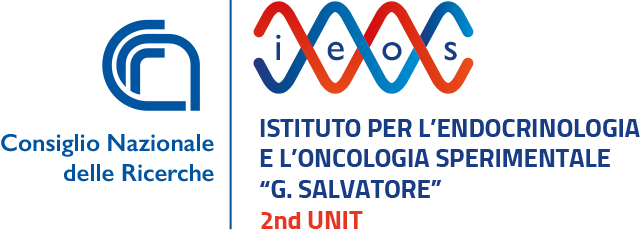Spotlight on DDX11: exploring the cellular functions of the Warsaw breakage syndrome DNA helicase- Dr Francesca Pisano-IBBC, CNR
Abstract:
DDX11 is a superfamily 2 Fe-S cluster DNA helicase that plays a key role in DNA replication, repair, recombination, and the establishment of sister chromatid cohesion. Mutations in DDX11 are linked to Warsaw breakage syndrome (WABS), a rare genetic disorder characterised by severe prenatal and postnatal growth restriction, microcephaly, intellectual disability, sensorineural hearing loss, and chromosomal cohesion abnormalities at the cellular level. Despite being classified as a "cohesinopathy," the molecular mechanisms underlying WABS remain poorly understood, and no cure currently exists for this debilitating condition.
In this seminar, I will present my laboratory’s contributions to elucidating the role of DDX11 in coupling sister chromatid cohesion with DNA replication, along with new findings that reveal an unexpected function of DDX11 in regulating the autophagy pathway. In DDX11-knockout (DDX11-KO) RPE-1 cells, autophagic flux is significantly impaired under various stimuli, as evidenced by a marked reduction in the conversion of microtubule-associated protein 1 light chain 3 (LC3), a well-established marker of autophagy. Furthermore, defects in autophagosome and autolysosome formation were observed in DDX11-KO cells compared to control RPE-1 cells, following transfection with an mRFP-GFP-tagged LC3 plasmid construct. Notably, the autophagy defects in DDX11-deficient cells were rescued by re-expression of either wild-type DDX11 or the ATPase-dead mutant (DDX11-K50R), indicating that helicase activity is not required for this function. Autophagy anomalies were also detected in fibroblasts derived from WABS patients.
Together, these findings uncover a previously unrecognised cytoplasmic role for DDX11, which may contribute to the pathogenesis of WABS.
Biography:
Francesca M. Pisani is a Research Director at the Istituto di Biochimica e Biologia Cellulare of the Consiglio Nazionale delle Ricerche (IBBC–CNR, Naples site). Her recent work focuses on the molecular and cellular functions of DDX11 and FANCJ, two DNA helicases whose mutations are implicated in genome instability disorders—Warsaw breakage syndrome and Fanconi anaemia, respectively. A key objective of her research is to elucidate how DDX11 and FANCJ collaborate with the DNA replication machinery to ensure the precise duplication of genomic regions susceptible to forming non-canonical secondary DNA structures (e.g., G-quadruplexes, triplexes, and i-motifs). Her team employs a multidisciplinary approach, integrating biochemistry, molecular and cellular biology, and single-molecule biophysics to tackle these complex mechanisms.
Francesca M. Pisani was the Coordinator of the H2020-MSCA European Training Network AntiHelix (October 2019 – September 2024), a project dedicated to identifying small-molecule inhibitors of DNA helicases for the development of novel cancer therapies based on synthetic lethality. She is currently the Coordinator of the HE-MSCA Doctoral Network CohesiNet (January 2023 – December 2026), which explores the role of cohesin and its regulators in chromatin architecture and related human diseases, particularly cohesinopathies. Additionally, she was awarded an AIRC Investigator Grant (January 2022 – December 2026) to investigate the role of FANCJ in maintaining genome stability and its connection to cancer predisposition.



